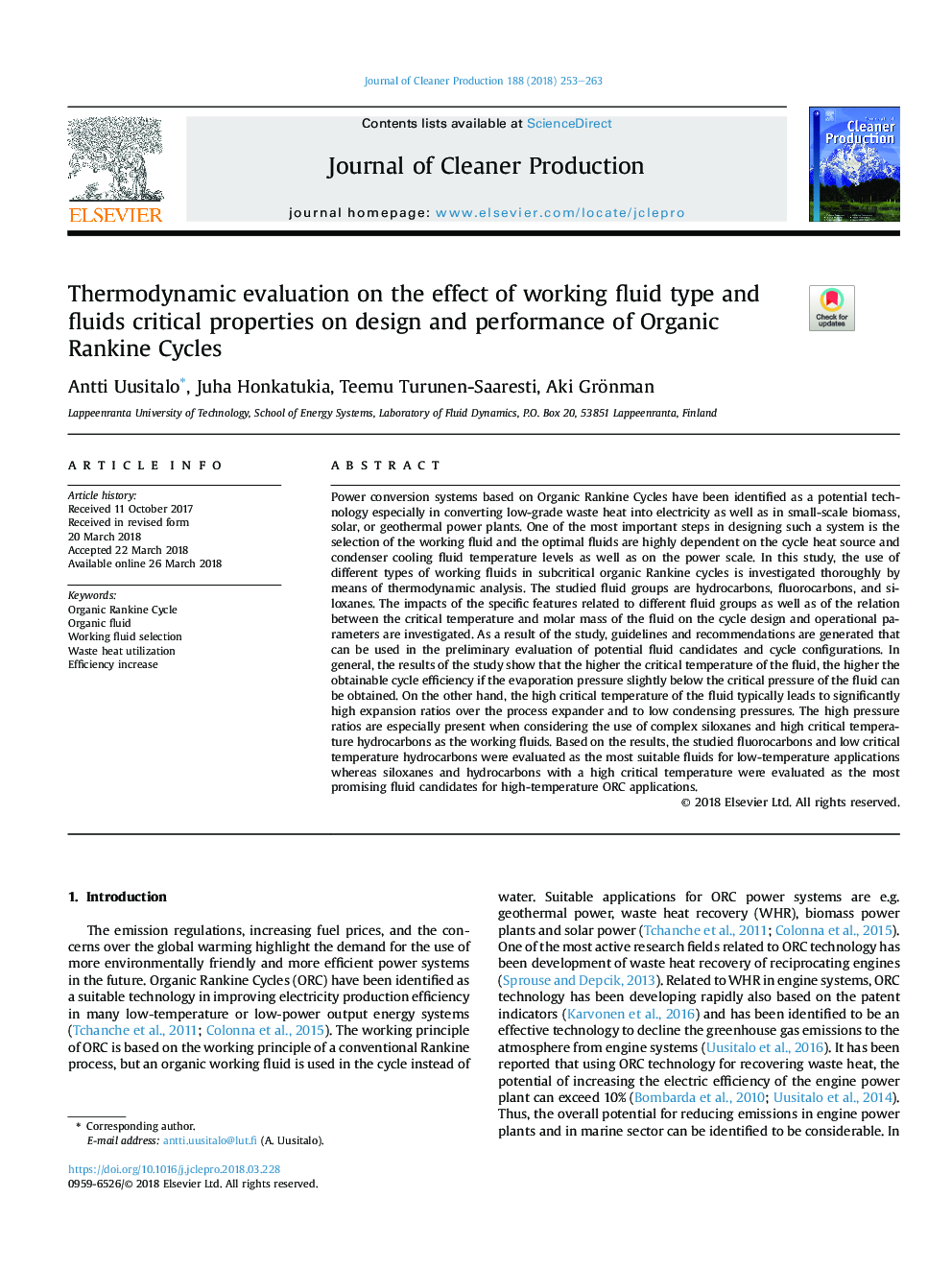| Article ID | Journal | Published Year | Pages | File Type |
|---|---|---|---|---|
| 8095437 | Journal of Cleaner Production | 2018 | 11 Pages |
Abstract
Power conversion systems based on Organic Rankine Cycles have been identified as a potential technology especially in converting low-grade waste heat into electricity as well as in small-scale biomass, solar, or geothermal power plants. One of the most important steps in designing such a system is the selection of the working fluid and the optimal fluids are highly dependent on the cycle heat source and condenser cooling fluid temperature levels as well as on the power scale. In this study, the use of different types of working fluids in subcritical organic Rankine cycles is investigated thoroughly by means of thermodynamic analysis. The studied fluid groups are hydrocarbons, fluorocarbons, and siloxanes. The impacts of the specific features related to different fluid groups as well as of the relation between the critical temperature and molar mass of the fluid on the cycle design and operational parameters are investigated. As a result of the study, guidelines and recommendations are generated that can be used in the preliminary evaluation of potential fluid candidates and cycle configurations. In general, the results of the study show that the higher the critical temperature of the fluid, the higher the obtainable cycle efficiency if the evaporation pressure slightly below the critical pressure of the fluid can be obtained. On the other hand, the high critical temperature of the fluid typically leads to significantly high expansion ratios over the process expander and to low condensing pressures. The high pressure ratios are especially present when considering the use of complex siloxanes and high critical temperature hydrocarbons as the working fluids. Based on the results, the studied fluorocarbons and low critical temperature hydrocarbons were evaluated as the most suitable fluids for low-temperature applications whereas siloxanes and hydrocarbons with a high critical temperature were evaluated as the most promising fluid candidates for high-temperature ORC applications.
Keywords
Related Topics
Physical Sciences and Engineering
Energy
Renewable Energy, Sustainability and the Environment
Authors
Antti Uusitalo, Juha Honkatukia, Teemu Turunen-Saaresti, Aki Grönman,
